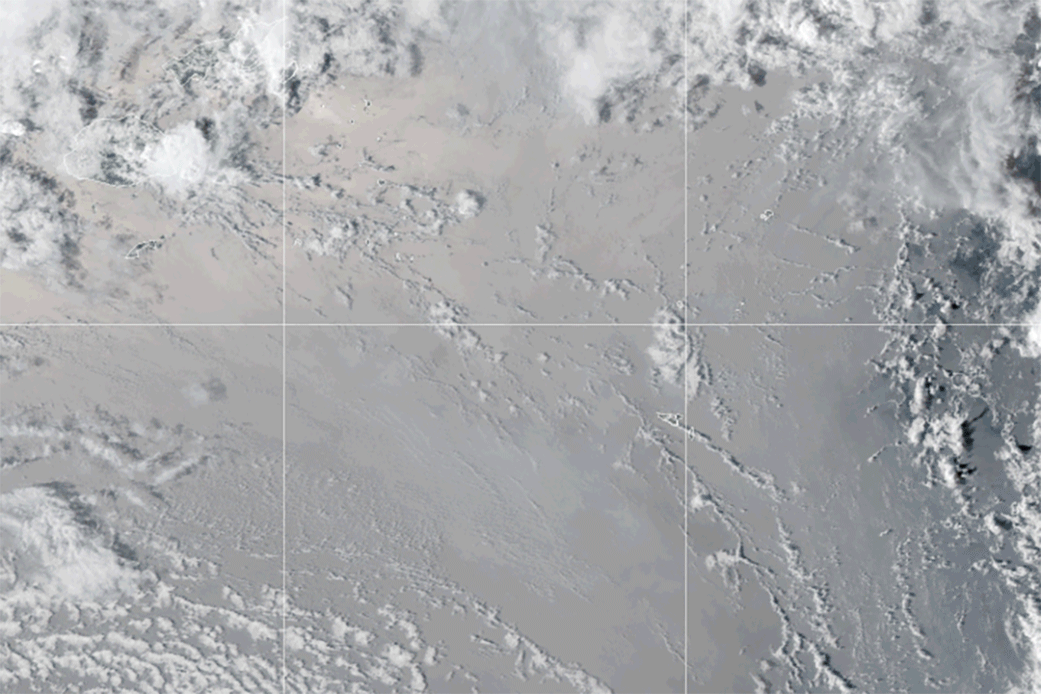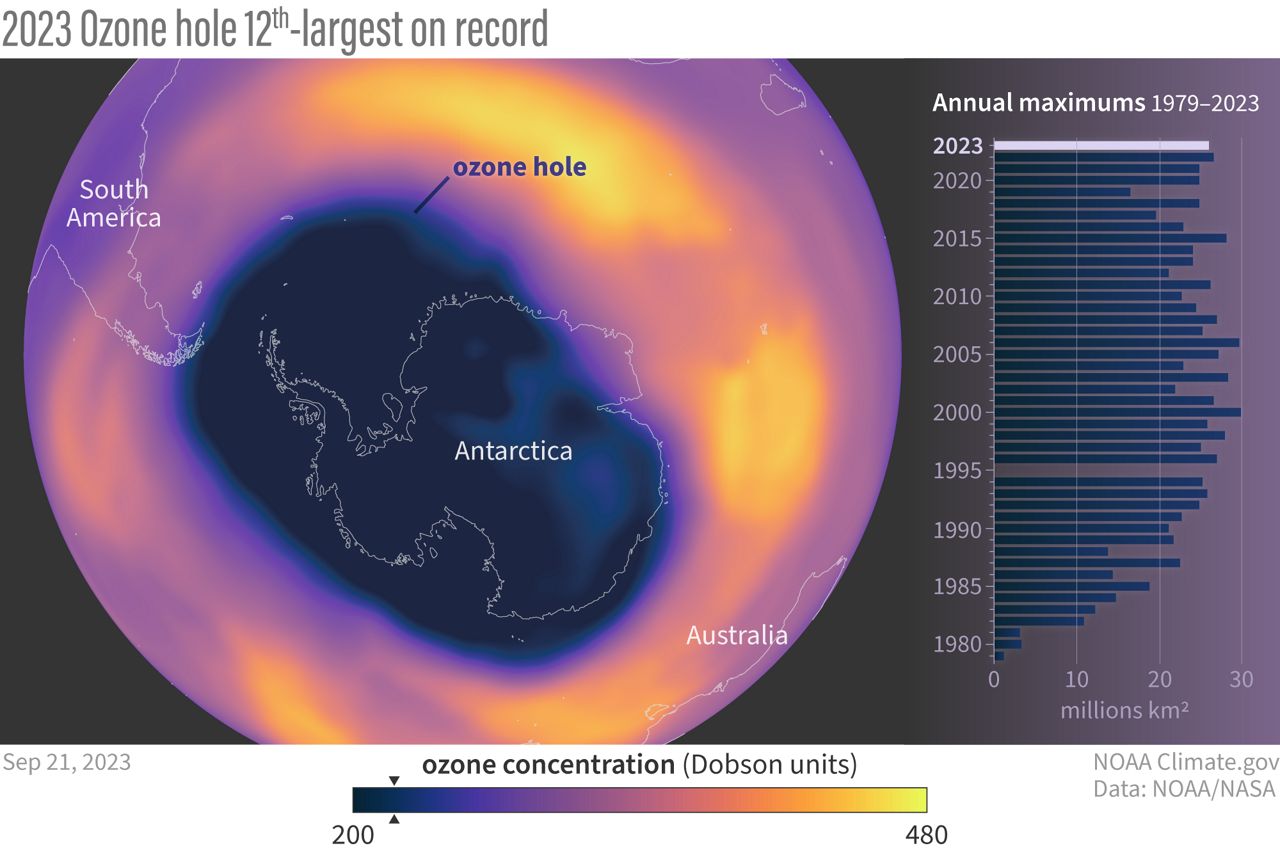This year’s ozone hole was the 12th largest on record, according to NOAA and NASA. The ozone hole reached a maximum size of 10 million square miles over Antarctica on Sept. 21.
Scientists use satellites and balloons to measure the ozone hole and have records dating back to 1979. Every September, the ozone layer thins enough to create a hole over Antarctica.
What is the ozone?
The ozone is a reactive gas produced by natural and man-made activities. It’s composed of three oxygen atoms and it’s found in the Earth’s upper and lower atmosphere. Ozone is good up high, but bad nearby.
Ground-level ozone in the lower atmosphere helps produce smog or haze, and can lower air quality. Unhealthy ozone air pollution in the summer can be harmful to people, and exacerbated by human activity.
In the upper atmosphere, there is a thin layer of ozone that wraps around the planet in the stratosphere. The ozone layer in the stratosphere absorbs incoming UV rays and protects people from radiation that causes skin cancer and cataracts. It acts like sunscreen for the Earth.
Here is more about the ozone:
2023 ozone hole
Every September, the ozone layer thins enough to form a hole over Antarctica. Scientists discovered the ozone hole in 1985 and have been tracking Antarctic ozone levels since 1979.
As mentioned earlier, this year’s stratospheric ozone hole is the 12th largest on record. Paul Newman, leader of NASA’s ozone research team says “it’s a very modest ozone hole.” It peaked at 10 million square miles, which is smaller than 2022.
(NOAA)
Human-made chemicals like chlorine and bromine destroy ozone molecules, which contributes to a bigger ozone hole. Chlorofluorocarbons (CFCs) are another contributor to ozone depletion.
CFCs were once common is aerosol sprays, foams, air conditioners, fire extinguishers and refrigerators. However, The 1987 Montreal Protocol banned production of CFCs by 2010, helping to reduce harmful, ozone destroying emission.
Volcano eruption to blame?
On Jan. 15, 2022, the Hunga Tonga-Hunga Ha’apai volcano erupted near Tonga, part of Polynesia in the southern Pacific. According to NASA, the violent underwater eruption sent so much water vapor into the stratosphere, it could fill 58,000 Olympic-size swimming pools.

This looping video shows an umbrella cloud generated by the underwater eruption of the Hunga Tonga-Hunga Ha’apai volcano on Jan. 15, 2022. (NOAA/GOES 17)
Scientists estimate that the 2022 Tonga eruption sent the equivalent of 10% of the water already present in the stratosphere. The amount of additional water vapor in the stratosphere could last for years, not only influencing upper atmospheric chemistry affecting the ozone layer, but temperatures on the surface as well.
The enormous plume of water vapor likely contributed to this year’s ozone hole depletion. NASA researchers can’t fully grasp the eruption’s effect on the ozone hole, but water vapor likely boosted chemical reactions in the stratosphere that depleted the ozone layer.
Our team of meteorologists dive deep into the science of weather and break down timely weather data and information. To view more weather and climate stories, check out our weather blogs section.

